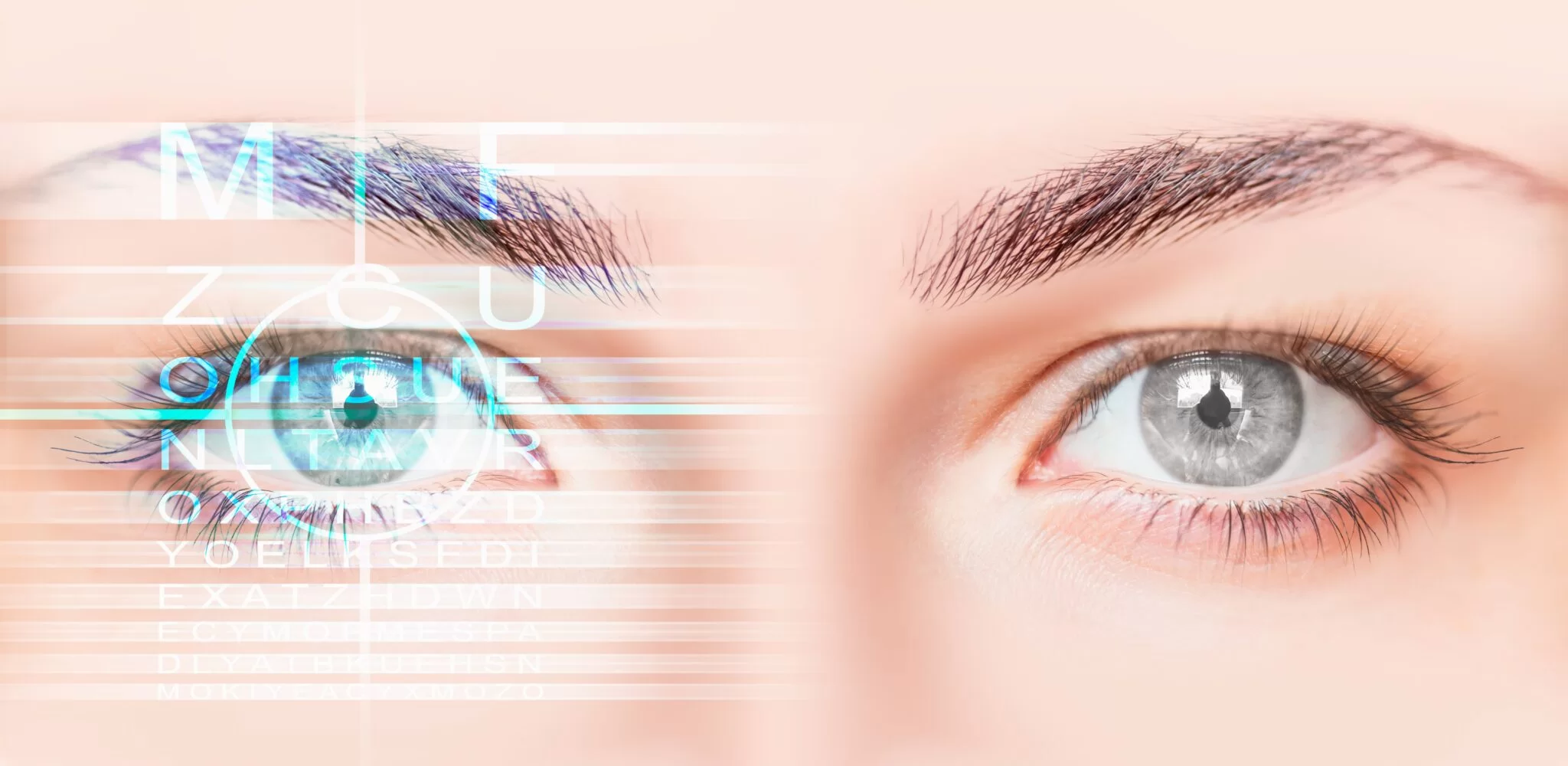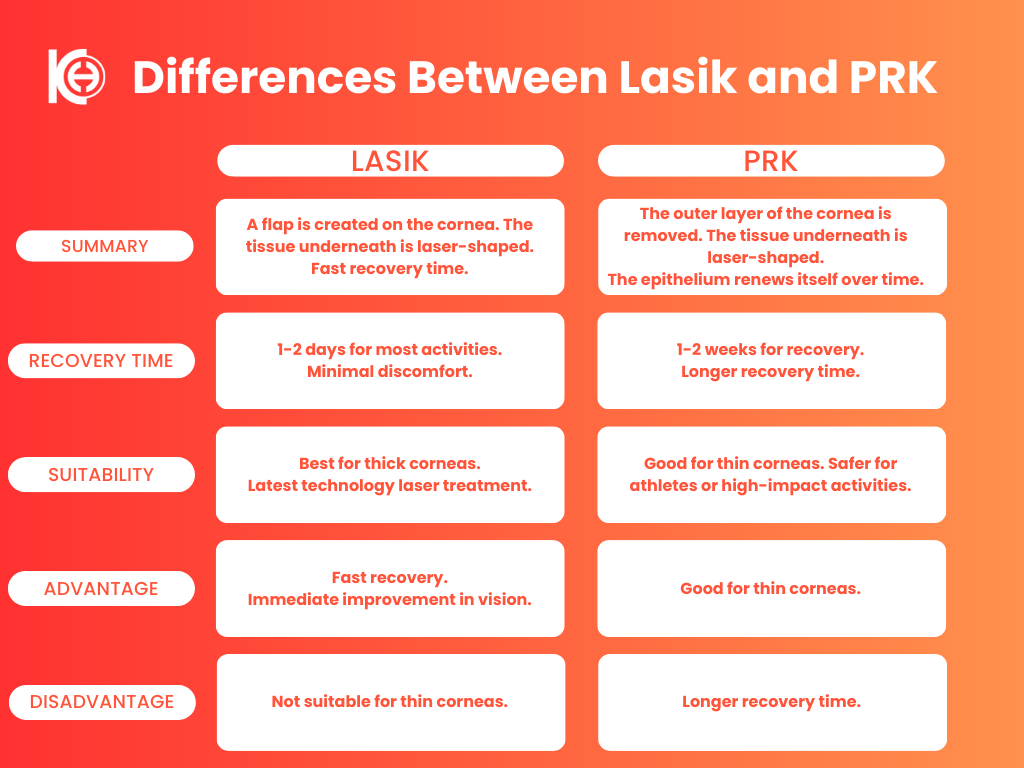QUICK APPOINTMENT FORM

Eye Laser Treatment Methods
LASEK, PRK or No Touch techniques are known as classical laser treatment. These treatments, which have been used for the last 25 years, have reached a point where extremely successful results can be obtained over many years. Therefore, laser treatments such as LASEK, PRK and No Touch are used to eliminate eye defects.
While the condition where the refractive power of the eye is higher than normal is called myopia, hypermetropia is an eye defect that occurs when the refractive power of the eye is less than normal. In addition, astigmatism refers to the fact that these defects or both of them are not seen equally in the eye quadrants and occur at different values. Each of these defects causes a decrease in visual acuity in people. They are also disorders that reduce the quality of vision. However, their treatment is possible with laser technologies.
What is LASEK Treatment and How Is It Performed?
LASEK is a very short operation that is completed in as little as 15 minutes. Laser application time takes about 20 seconds. It is known as a very common laser surgery in the world. However, it is known that all operations are performed with the latest technology laser devices. Patients who use glasses or lenses after the operation terminate their use. The operation is mostly used for the treatment of hyperopia, astigmatism and myopic refractive problems. It stands out as both an effective and safe method.
The most curious points about LASEK laser treatment are as follows:
- LASEK is based on the principle of removing epithelial tissue with the help of softening medication. After laser application, the removed epithelial tissue spreads back to its place.
- It can be applied to all patients between the ages of 18-60 who have suitable eyes.
- A detailed eye examination is performed for the patient before the operation.
- If you wear contact lenses, you should stop using them a few days before the operation.
- Anaesthetic drops are applied to the patient during the operation.
- With the softening drug applied to the tissue, the bonds of the lower corneal layers of the epithelium are loosened.
- Afterwards, the epithelium is separated into a layer with a diameter of 9 mm with the help of a spatula.
- After the laser is taken out of the area to be applied, the excimer laser is applied to the layer without epithelium.
After the application, the epithelial layer taken out is restored. LASEK application is a preferred method in cases where iLASIK application cannot be performed. The patient may feel uncomfortable in 2-3 days after the operation. However, vision is completely relieved between 3-6 weeks.

What is No Touch Treatment?
PRK and No Touch laser treatments are among the most frequently used laser treatments. They can be applied to patients with astigmatism, hyperopia and myopic eye disorders. This method can be applied to patients with myopia, hyperopia and astigmatism problems.
When starting the No Touch laser treatment process, anaesthetic drops are first instilled into the eye. During the application, the patient does not feel any pain or pain sensation. There is no device contact with the eye during the application of the treatment. A direct treatment is applied to the eye with the help of the rays emitted from the laser device. All the patient has to do at this stage is to look at the green light reaching the patient from the laser. In a very short time like 50 seconds, both eyes can be treated in the same session.
The eyes do not need to be closed after this treatment. The patient can keep both eyes open and return home on the same day. You will be given protective glasses by the clinic. In this process, the necessary warnings are made by the doctor to protect the patient’s eyes. It is normal to see stinging or redness in the eye for 36 hours after the operation. However, the patient spends the first days more comfortable with the medications given by the doctor. Complete relief of vision occurs in 3-6 weeks.
What is PRK Treatment?
PRK laser treatment is performed by softening and stripping the epithelial layer on the cornea with the help of a solution. Excimer laser operation is one of the techniques. It is also known as the first Excimer technique applied in the world. The method does not produce any negative results and contributes to obtaining very good results in patients. In the PRK method, which is the abbreviation of Photo Refractive Keratectomy, the epithelial layer on the cornea is softened and removed from the upper part. Then, the cornea is reshaped with the laser process. In this way, the refractive power of light is changed.
PRK laser treatment is performed within seconds. The most important advantage of this treatment is that no scar is formed because the flap is not removed. This method is often preferred by patients who do not want scarring. Since the corneal flap is not removed, there is no deterioration in the natural structure of the cornea.
Before PRK laser treatment, the patient should not apply eye make-up, use perfume and take blood thinners. Soft contact lens wearers should stop using these lenses 1 week before the operation, and hard lens wearers should stop using these lenses 2 weeks before the operation. You can get information about all the necessary details from your specialist doctor.

How Long Does Eye Laser Surgery Take?
Eye laser surgery is an operation that is completed in a very short time, approximately 5-10 minutes. During this procedure, which is performed under drip anaesthesia, the process is even shorter if only one eye is to be treated. However, the duration may vary according to the patient’s eye structure and the details of the treatment.
Laser devices are completely computer controlled and precisely programmed. Therefore, they are very reliable methods. It is a treatment method that offers permanent solutions to vision problems when applied by an expert and experienced doctor.
LASEK / PRK / No Touch Laser Surgery Prices
LASEK / PRK / No Touch Laser surgery price varies depending on the underlying cause and the operation to be performed. The treatment plan to be created by our specialist ophthalmologist depending on the detailed examination result may vary from person to person.
Please click here for appointment and price information.
The above information is for informational purposes. If you have any medical concerns or questions, please make an appointment with our ophthalmologists.















